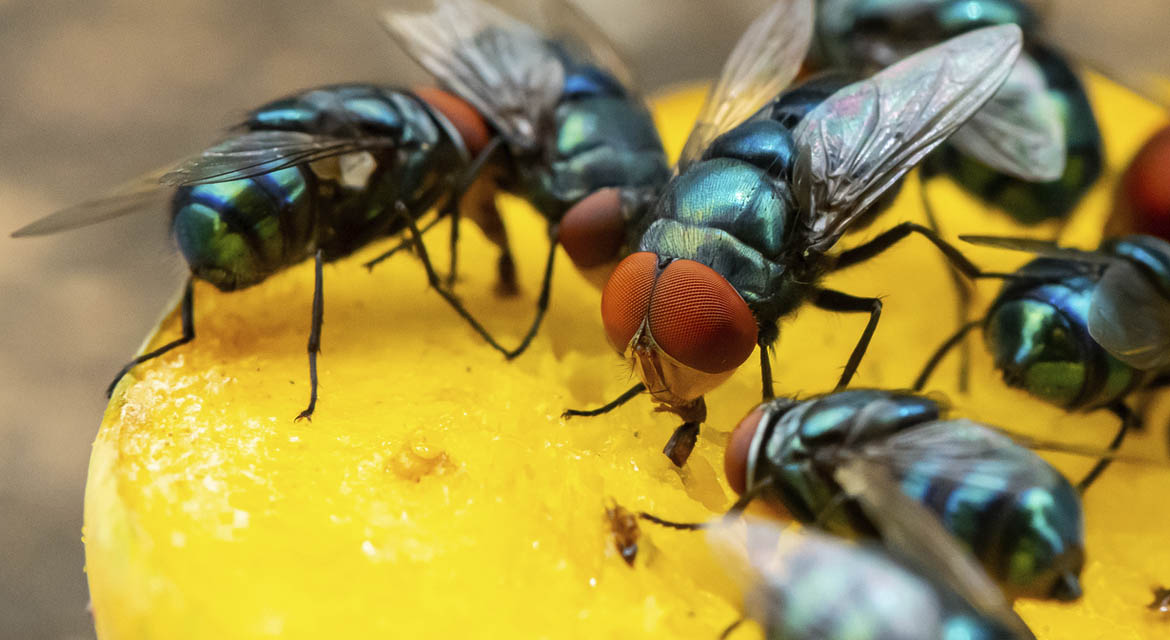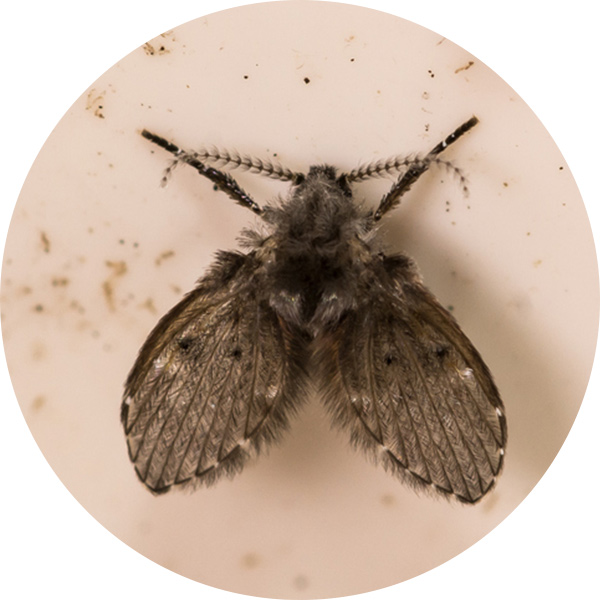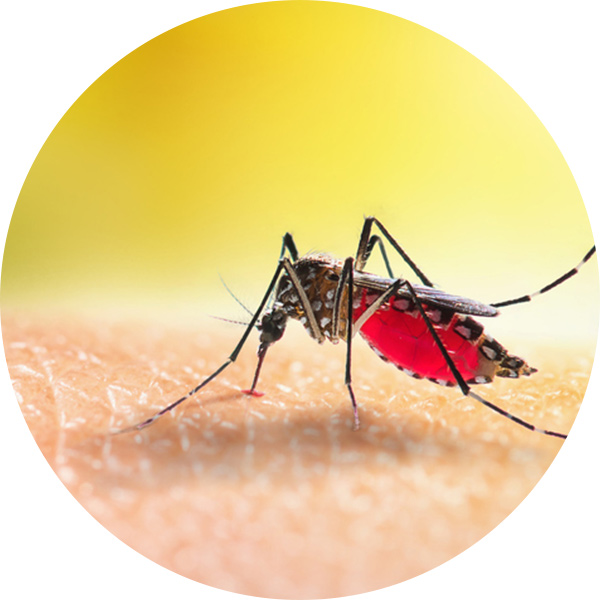
Fly Facts & Information
The concerns of a fly infestation at home include the potential for the spread of diseases, contamination of food and surfaces, and the annoyance factor of their presence in living areas.
Risks of Flies
Disease Transmission
Flies, particularly house flies and fruit flies, can transmit various diseases and pathogens. They can pick up disease-causing microorganisms such as bacteria, viruses, and parasites from sources like garbage, feces, decaying matter, and contaminated surfaces. When flies land on food, dishes, or surfaces in your living environment, they can transfer these pathogens, potentially causing foodborne illnesses and infections. Common diseases associated with flies include diarrhea, dysentery, salmonellosis, and E. coli infections.
Contamination of Food and Surfaces
Flies can contaminate food and surfaces with their saliva, regurgitated fluids, feces, and body parts. When flies land on food items, they can leave behind bacteria, eggs, or larvae, making the food unsafe for consumption. This poses a significant risk in homes, restaurants, and food processing facilities, as contaminated food can lead to food poisoning outbreaks and compromise public health. Additionally, fly droppings and secretions can stain and contaminate surfaces, requiring thorough cleaning and sanitation.
Nuisance and Hygiene Concerns
Fly infestations can be a significant nuisance, impacting comfort, hygiene, and overall well-being. The constant presence of flies buzzing around can be irritating and disrupt daily activities. Flies can land on people, surfaces, and personal belongings, leading to a sense of unease and reduced quality of life. Additionally, the accumulation of fly carcasses, feces, and larvae in the environment can create unhygienic conditions, emit foul odors, and attract other pests, contributing to an unsanitary and unpleasant living or working environment.
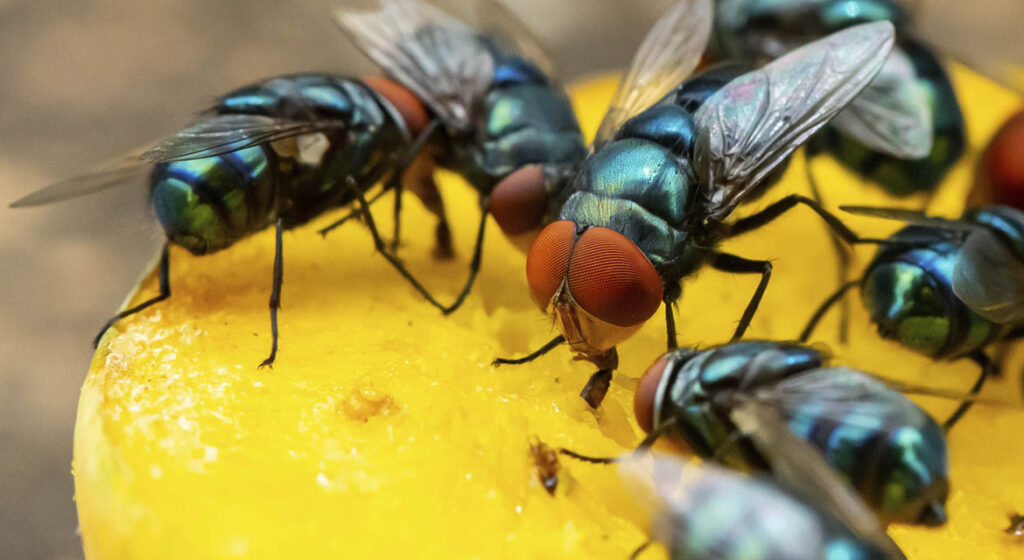
Truly Nolen GUARANTEE
If you’re not completely satisfied, you’ll get a full refund on your most recent service with our 100% money back guarantee.
Common Species of Flies

House Fly

Fruit Fly
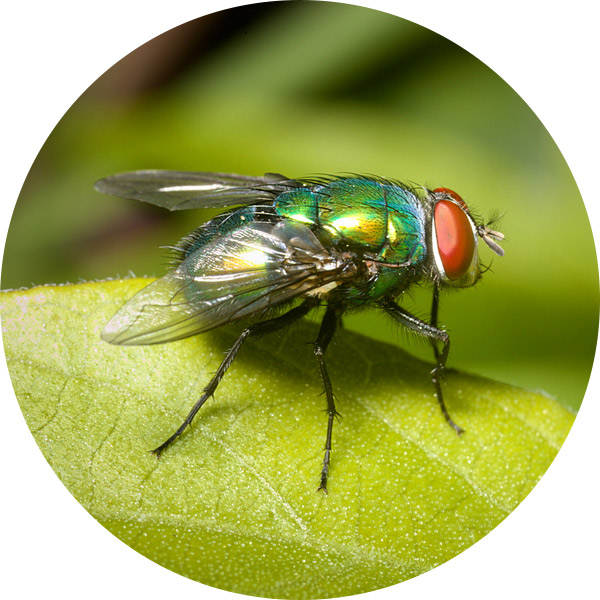
Blow Fly
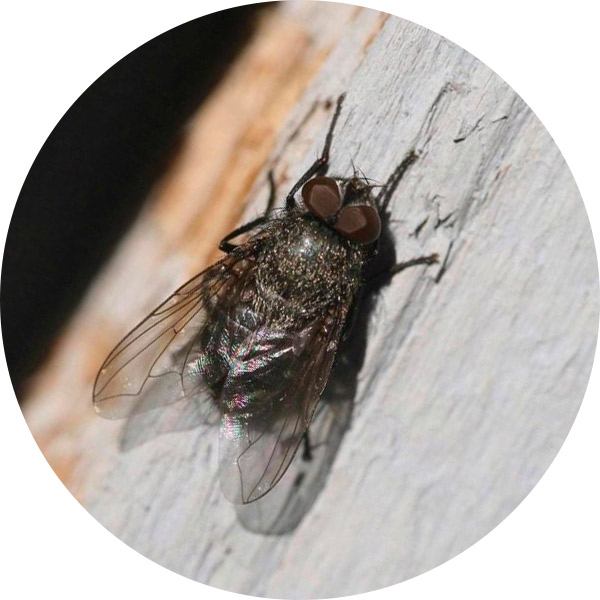
Cluster Fly
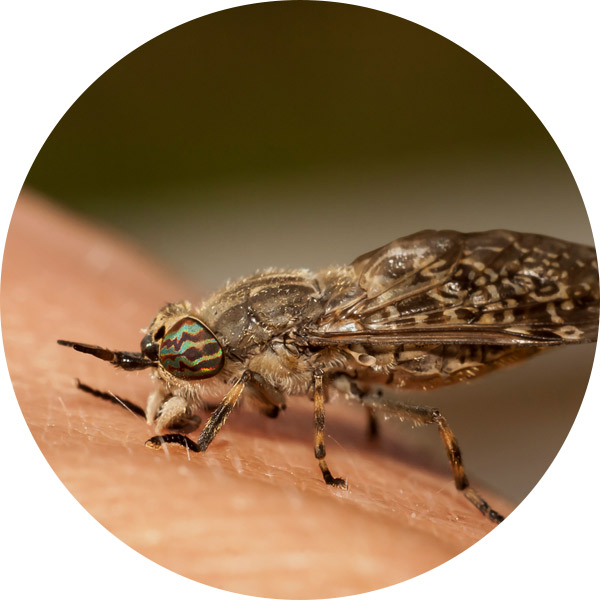
Stable Fly
How To Identify Flies
Flies can be identified by their small size, two wings, and buzzing flight pattern, with various species having distinct appearances such as house flies or fruit flies. To identify a fly infestation at home, look for an increased number of flies indoors, particularly near windows, garbage cans, or areas with exposed food, as well as the presence of fly eggs, larvae, or pupae in breeding sites such as decaying organic matter or moist areas.
Fly Appearance
Flies are insects of the order Diptera, characterized by a single pair of wings and a pair of knob-like structures called halteres. They have a compact body with three distinct body segments: the head, thorax, and abdomen. Flies vary in size and coloration depending on the species, but most possess large compound eyes, mouthparts adapted for sponging or piercing, and bristly hairs on their bodies. Their wings allow them to fly with great agility and speed.
Fly Habitat
Flies inhabit a wide range of environments worldwide. They can be found in diverse habitats such as forests, grasslands, urban areas, and agricultural fields. Flies are attracted to areas where they can find suitable breeding sites and food sources. Common fly species, like house flies, are often associated with human habitation and are frequently found near garbage, decaying organic matter, and animal waste.
Fly Diet
Flies have a varied diet depending on their species. Most flies are opportunistic feeders and consume a wide range of organic material. Some species feed on nectar and plant sap, while others are scavengers that feed on decaying matter, feces, or dead animals. Certain fly species are blood feeders and rely on vertebrate or invertebrate hosts for sustenance. Parasitic flies, such as mosquitoes and tsetse flies, have specialized mouthparts for piercing and sucking blood.
Fly Behavior
Flies are highly mobile insects that can fly swiftly and maneuver with agility. They are adept at detecting odors, heat, and visual cues, which guide them toward potential food sources and suitable breeding sites. Flies are known for their rapid reproductive cycles and high population growth rates. They exhibit various behaviors such as feeding, mating, and laying eggs. Many fly species are attracted to areas with decaying organic matter, where they lay their eggs. Flies also play important ecological roles as pollinators and decomposers.
Fly Reproduction
Flies undergo a complete metamorphosis, consisting of four life stages: egg, larva (maggot), pupa, and adult. After mating, female flies deposit their eggs in suitable substrates, such as decaying organic matter, animal waste, or moist soil. The eggs hatch into larvae, which are worm-like and undergo multiple molts as they feed and grow. Larvae then transform into pupae, where they undergo a process of metamorphosis before emerging as adult flies. The duration of the life cycle varies among fly species, influenced by environmental conditions such as temperature and food availability.
Fly Prevention
Fly control involves eliminating or managing factors that attract flies and disrupt their life cycle. Effective sanitation practices are crucial, including proper waste management and prompt removal of decaying matter. Trash bins should be covered tightly, and waste should be disposed of in sealed containers. Maintaining clean living spaces, regular cleaning, and eliminating potential breeding sites can help reduce fly populations. Physical barriers such as window screens and door sweeps can prevent flies from entering indoor spaces. Insecticides and traps can be used as supplementary control measures, but their application should be done judiciously and according to product instructions to minimize environmental impact and ensure human and pet safety.
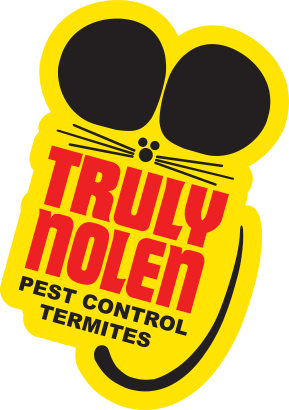
$50 Off Year Round Pest Control
Truly Nolen is a family-owned company with 85 years of experience providing the best pest control. If you’re not completely satisfied, you’ll get a full refund on your most recent service with our 100% money back guarantee.
The Truly Nolen Approach
Environmentally Conscious
We work to minimize our impact on the environment by using naturally occurring materials whenever possible.
Pet Friendly
Truly Nolen uses an Integrated Pest Management (IPM) approach designed with your pets in mind.
100% Money Back Guarantee
If you’re not completely satisfied, you’ll receive a full refund on your most recent service.
How Truly Nolen Gets Rid of Flies
Truly Nolen typically follows a process for treating a fly infestation that involves several steps. First, a thorough inspection is conducted to identify the source of the infestation and the areas affected. Next, targeted treatments are applied, which may include fly baits, insecticide sprays, or fly traps in areas where flies are found. Additionally, sanitation measures are implemented to remove breeding sources, such as proper waste management and cleaning up organic matter. Ongoing monitoring and follow-up visits are conducted to ensure the effectiveness of the treatment and address any remaining concerns.
Frequently Asked Questions
Why are flies attracted to my home?
Flies are attracted to homes because they are seeking food sources. They are particularly drawn to decaying organic matter, such as garbage, rotting fruits, or pet waste. Additionally, flies are attracted to warmth, moisture, and areas with standing water.
Are flies harmful or dangerous to humans?
While most common flies are not directly harmful, they can pose health risks. Flies can spread diseases by landing on contaminated surfaces and then on food or utensils. Some diseases associated with flies include food poisoning, diarrhea, and eye infections. Learn More!
How do I prevent flies from entering my home?
To prevent flies from entering your home, take these measures: keep doors and windows screened, seal cracks or gaps in doors and windows, dispose of garbage properly and frequently, clean up pet waste promptly, store food in sealed containers, and maintain good hygiene in the kitchen and dining areas.
How can I get rid of flies in my home?
To get rid of flies, you can use methods such as fly traps, fly swatters, or fly papers to catch and eliminate individual flies. Additionally, addressing the root cause by eliminating breeding sources, such as proper waste management and cleaning up organic matter, can help reduce fly populations. If the infestation persists, professional pest control services can provide effective treatments. Learn More!
Why do flies seem to appear suddenly in large numbers?
Flies can reproduce quickly, especially in warm weather or if there are ample food and breeding sources available. Large numbers of flies can appear suddenly if there is a nearby breeding site, such as decaying organic matter or standing water, attracting and supporting a significant population of flies.

